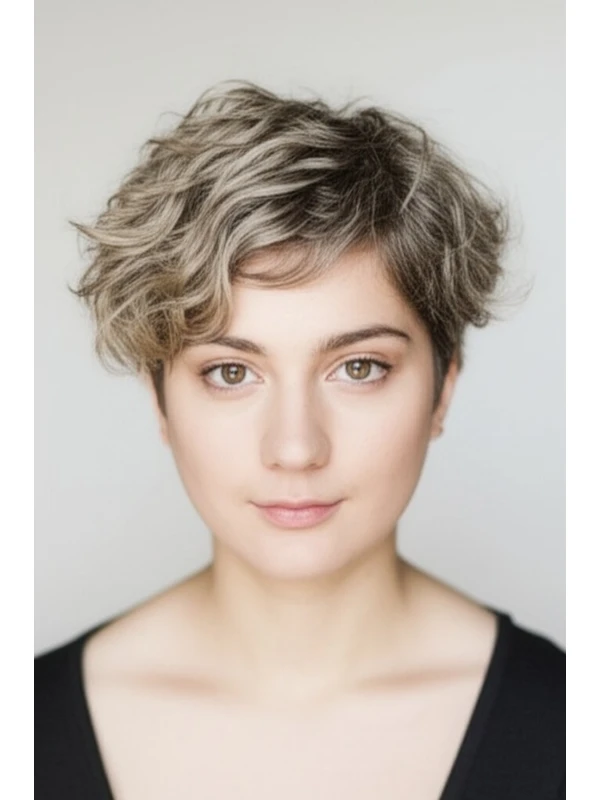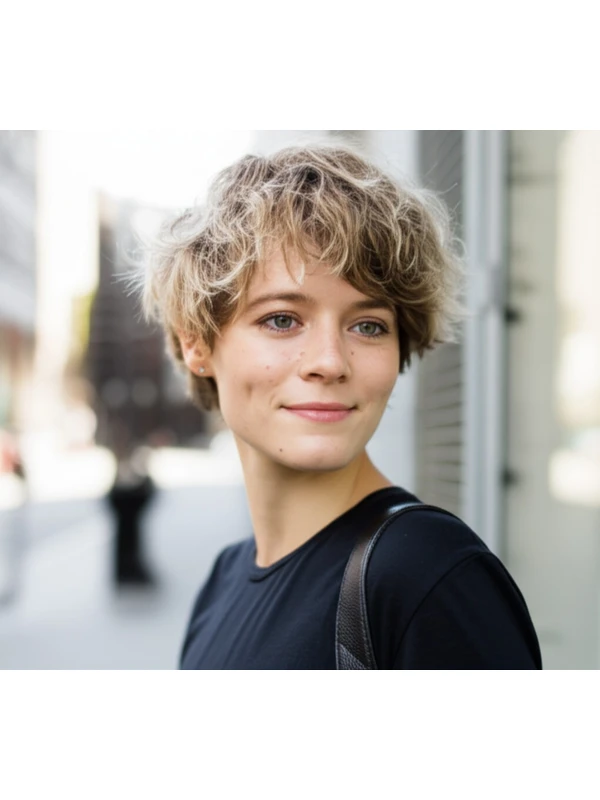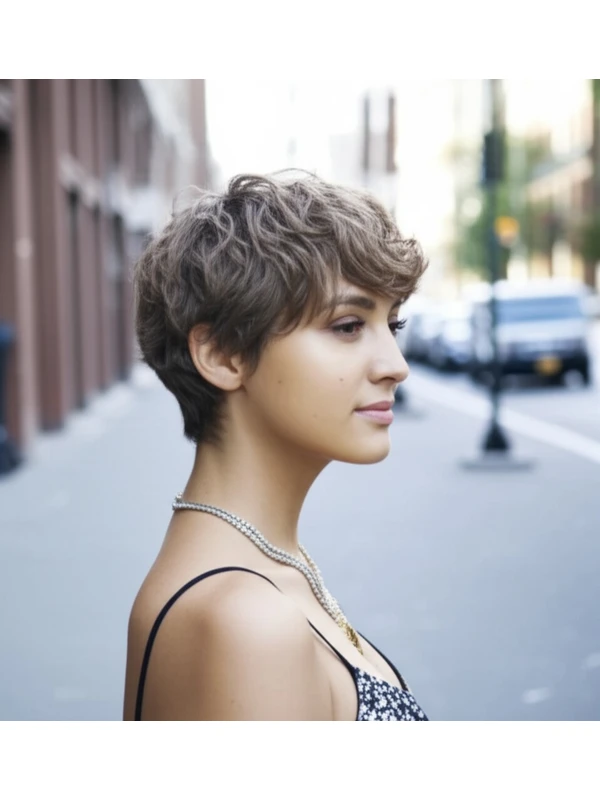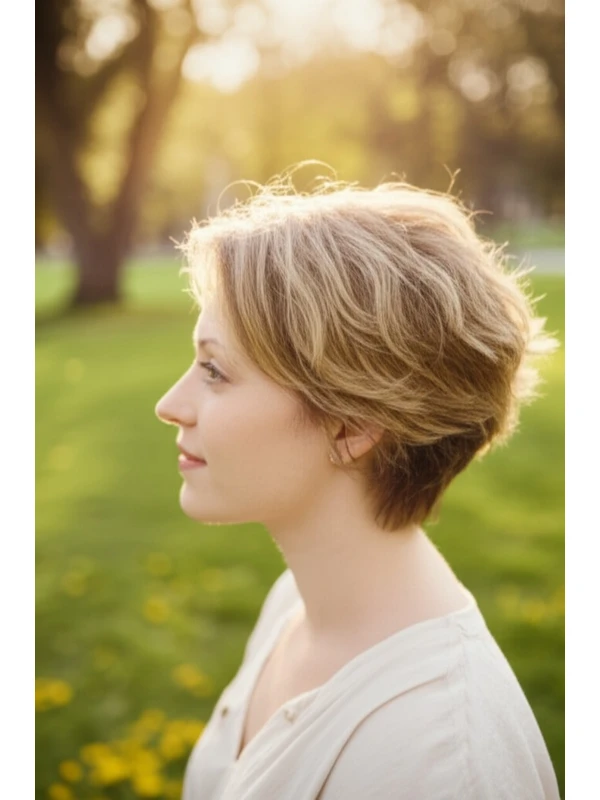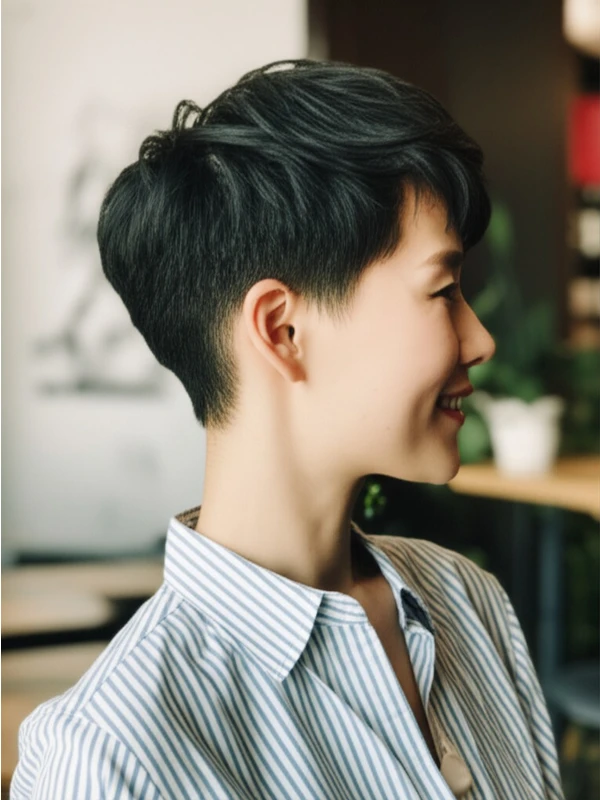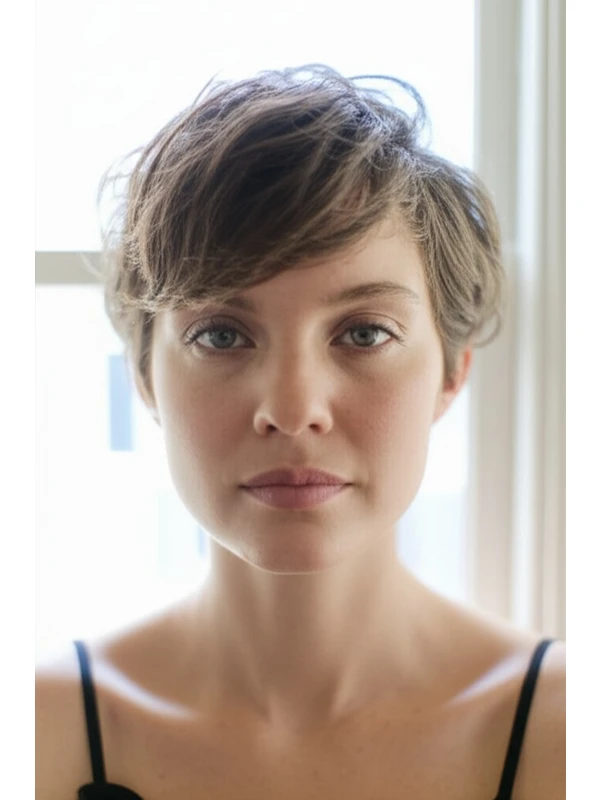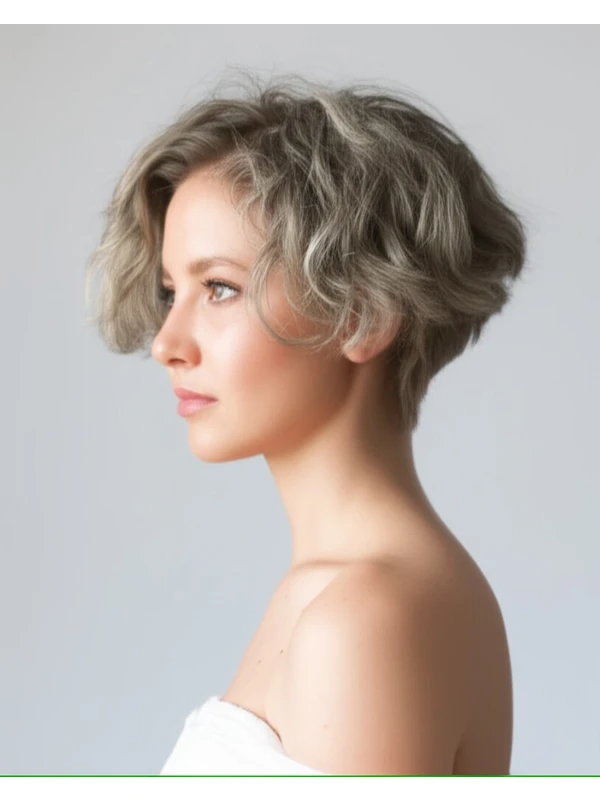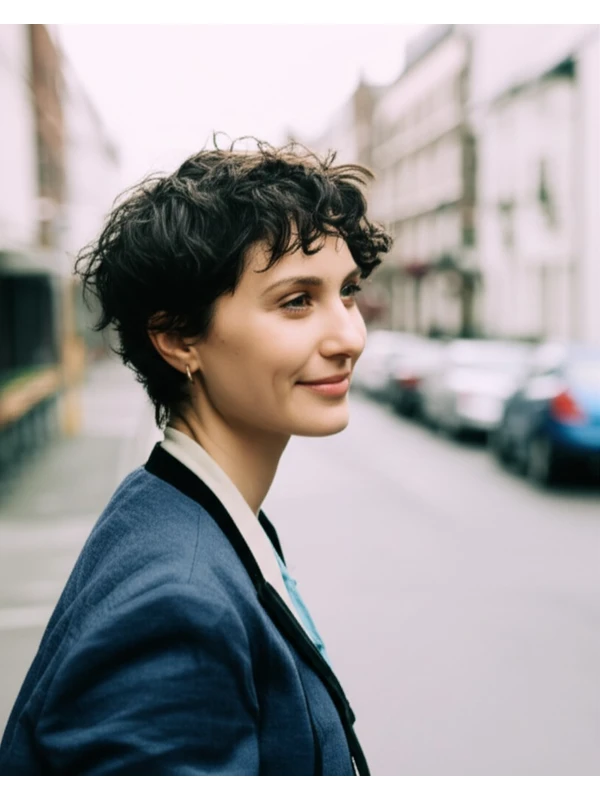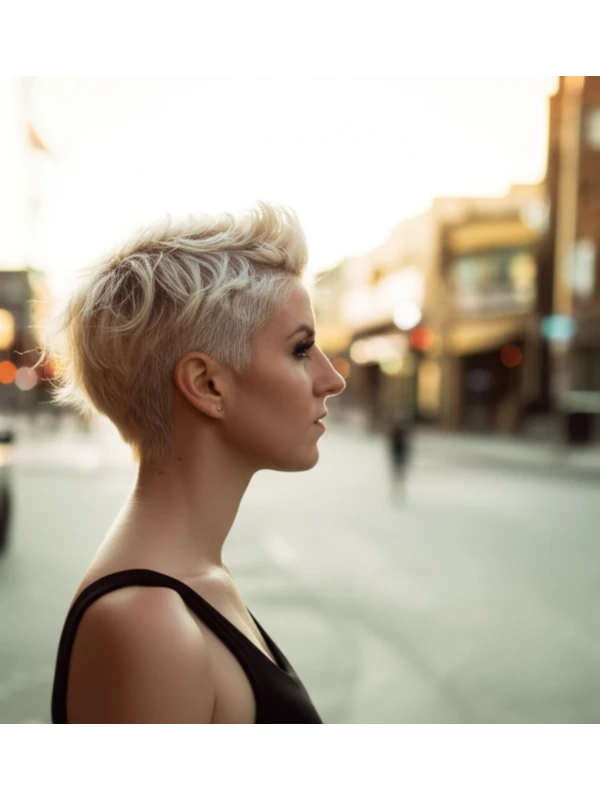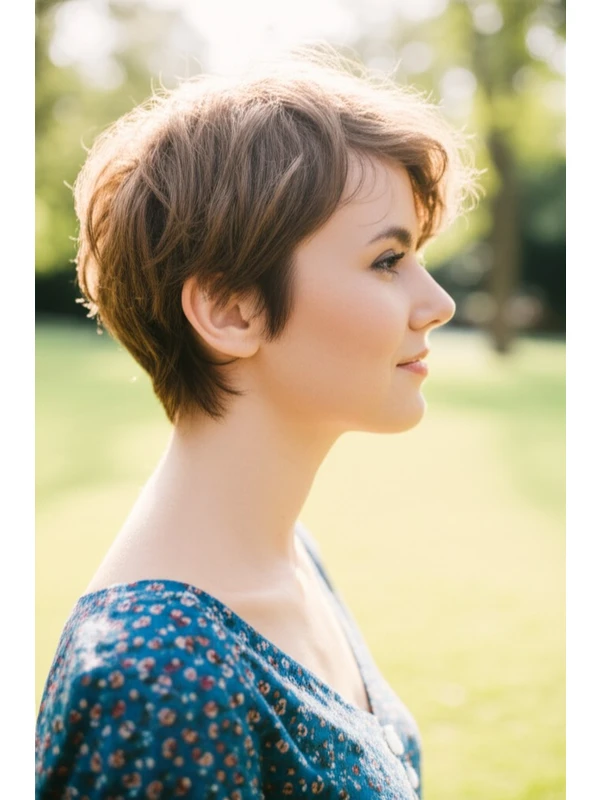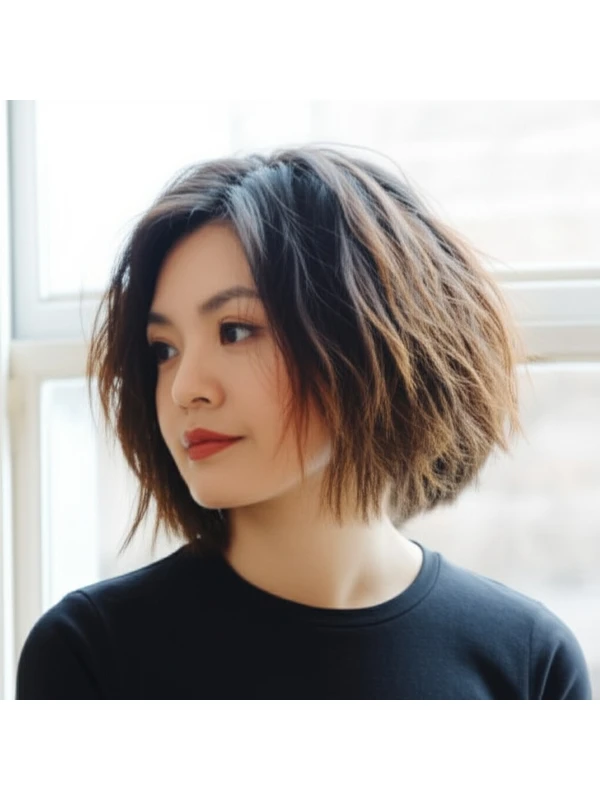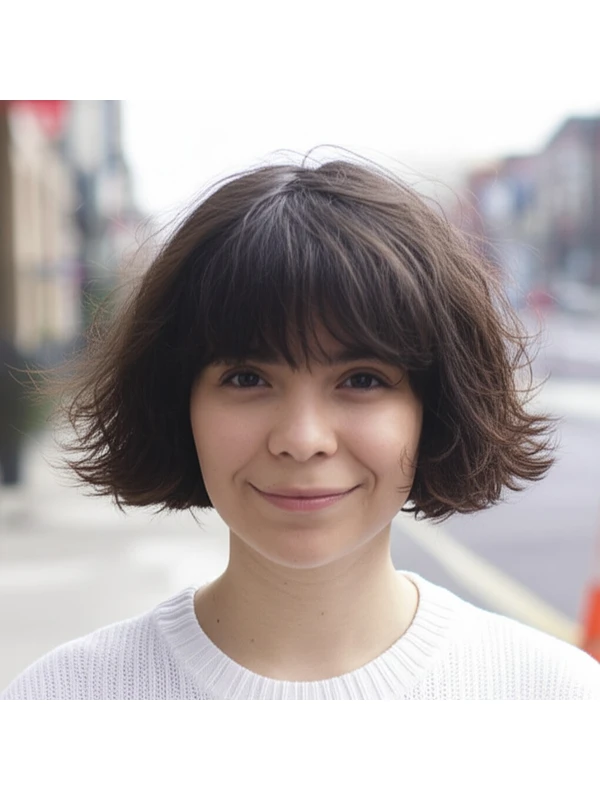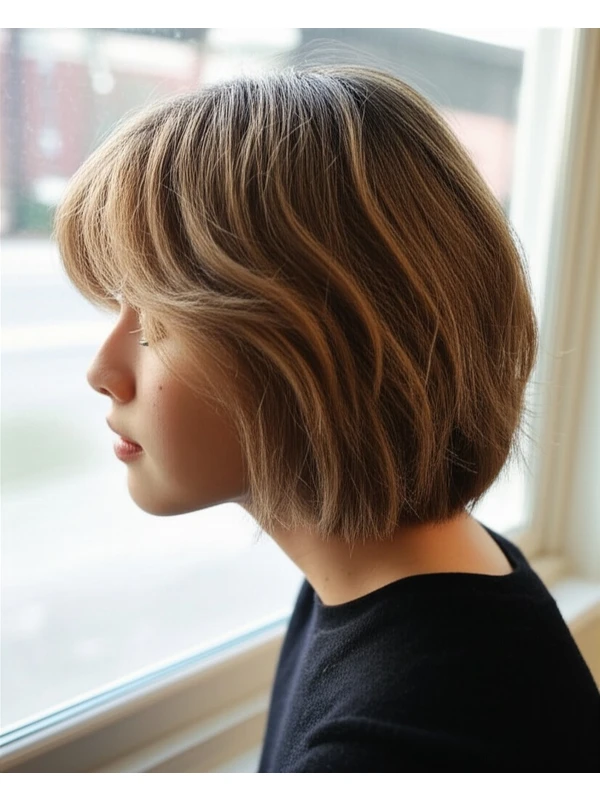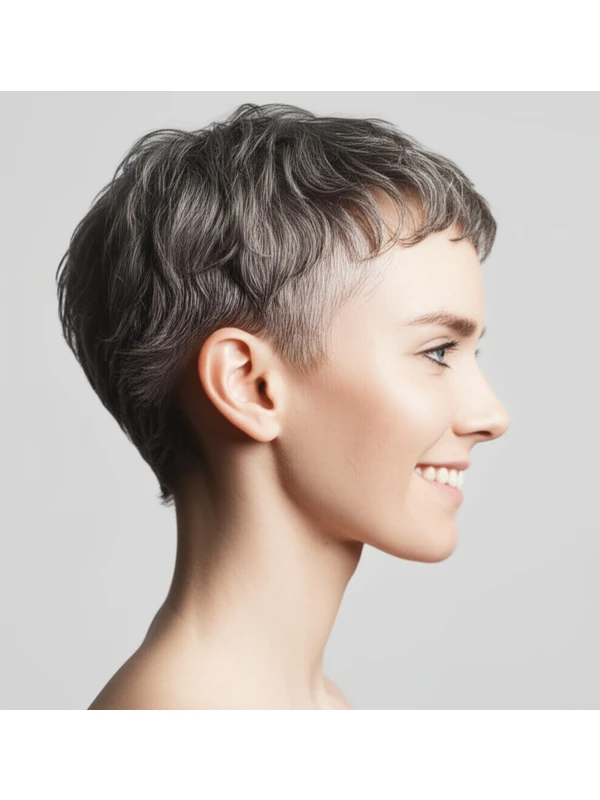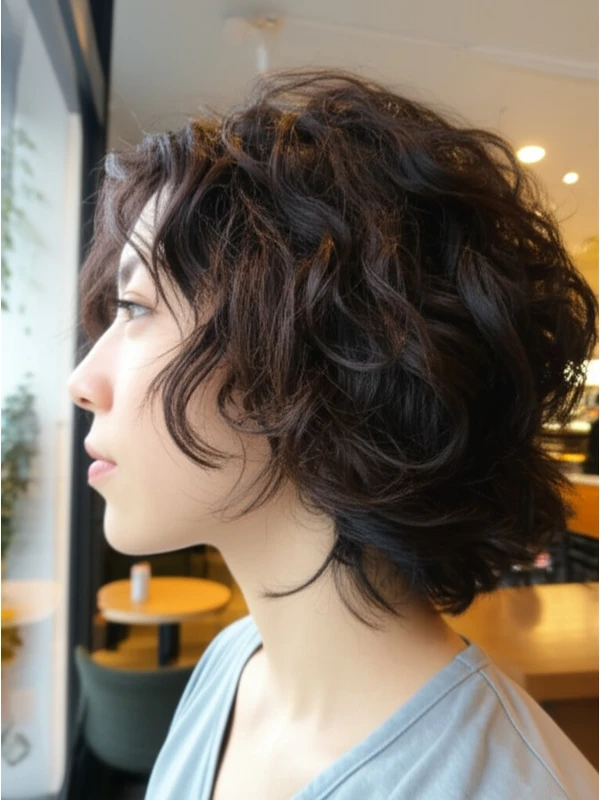#The Crop Cut: A Modern Classic for Every Face & Hair Type
The crop cut is having a major moment! It’s a versatile style that feels fresh, effortless, and undeniably cool. But what is a crop cut exactly? Let's break down everything you need to know before taking the plunge.
#1) Background & Definition: What Makes a Crop Cut a Crop Cut?
The "crop" in crop cut refers to its shorter length on top and often longer layers around the sides and back, creating a slightly undone, textured feel. It’s all about that intentional choppiness!
- Geometry: Think of it as a short bob with more volume at the crown and face-framing elements. The overall shape is generally blunt or softly layered.
- Key Features: A crop cut prioritizes movement and texture over rigid structure. It’s meant to look lived-in, not overly polished (though you can polish it!).
- Typical Length Ranges: Usually falls between chin length to just below the ears for the shortest layers on top, with longer pieces extending to the jawline or collarbone at the back and sides. Variations exist – some are shorter and more pixie-like, while others lean towards a long bob (lob).
- Alternative Names: You might also hear it called a "textured crop," a “modern chop,” or simply a short layered cut.
#2) Face Shape Fit: Finding Your Crop Cut Sweet Spot
The beauty of the crop cut is its adaptability, but certain variations work best with specific face shapes.
- Oval: Lucky you! Almost any crop length and variation will flatter an oval face. Experiment with fringe options (see below).
- Round: A slightly longer crop, hitting just past the jawline, helps elongate a round face. Avoid blunt bangs which can accentuate width. Soft, angled layers around the face are your friend. A side part adds asymmetry and slims.
- Square: Soften those angles! Layers that begin above the chin will create movement and soften a square jawline. A wispy fringe or curtain bangs work beautifully to break up harsh lines.
- Heart: Chin length or slightly longer crops with face-framing layers are ideal for heart shapes. Avoid styles that add too much volume at the crown, as this can make your forehead appear wider. A side part balances proportions.
- Diamond: A crop cut with a strong fringe (either blunt or curtain) helps balance a diamond face shape’s wide cheekbones. Layers around the jawline soften angularity.
- Oblong: Avoid super-short crops that can visually lengthen an oblong face. Opt for longer layers and volume at the sides to add width. A middle part is generally flattering, but experiment with side parts if you want a softer look.
Fringe/Bang Options: A crop cut really shines with fringe! * Blunt Fringe: Bold & modern; best for oval, diamond, and square faces. * Curtain Bangs: Soft & face-framing; universally flattering. * Wispy Fringe: Delicate & airy; good for softening heart shapes. * Side-Swept Fringe: Adds asymmetry and slims round faces.
#3) Body Proportions & Height Guidance: Styling for Your Silhouette
The crop cut's impact isn’t just about your face – it affects your overall proportions too!
- Petite: Shorter, chin-length crops create the illusion of height. Avoid overly long layers that can overwhelm a smaller frame.
- Average Height: Most lengths work well. Experiment with volume placement to add or subtract visual inches.
- Tall: Longer crop cuts (jawline or collarbone length) balance proportions and prevent looking too top-heavy.
- Narrow Shoulders: Layers around the shoulders create width and balance a narrow frame. Avoid slicked-back styles that emphasize thinness.
- Broad Shoulders: A slightly shorter, more textured crop can visually minimize broad shoulders. Volume at the crown helps draw attention upwards.
- Short Neck: Avoid very short crops that accentuate a short neck; opt for longer layers around the face to elongate your neck line. A side part is generally more flattering than a center part.
- Long Neck: Shorter, layered styles can help fill out a long neck and create balance.
#4) Works Best With Hair Types & Densities: Matching Cut to Texture
The crop cut's adaptability truly shines here! However, understanding your hair’s behavior is key.
- Straight Hair: Crop cuts look incredibly sleek and modern on straight hair. Texture can be added with styling products or point-cutting techniques during the cut.
- Wavy Hair: The crop cut enhances natural waves and creates a playful, undone vibe. Layers are essential to prevent bulkiness.
- Curly/Coily Hair: Crop cuts work beautifully for embracing natural curl patterns! Shorter lengths can reduce weight and encourage definition. Shrinkage is crucial. What looks like 6 inches in the salon might end up being 3-4 inches when dry. Communicate this to your stylist!
- Fine Hair: Layers add volume, but be careful not to overdo it – too many layers can make fine hair look even thinner. Blunt cuts at the ends create a fuller appearance.
- Medium Hair: The crop cut is generally very flattering for medium density hair.
- Thick Hair: Layers are essential to remove weight and prevent the style from looking bulky. Point-cutting techniques help thin out thick layers.
Density Tip: If you have very dense hair, ask your stylist to "thin" the ends during the cut to create more movement and reduce bulk.
#5) Styling Variations: From Casual Cool to Evening Chic
The crop cut is a chameleon! Here's how to style it for different looks.
- Sleek vs. Textured: Sleek styles are achieved with smoothing serums and flat irons (if straight hair). Texture comes from air-drying, sea salt sprays, or texturizing creams.
- Middle vs. Side Part: A middle part creates symmetry; a side part adds softness and asymmetry.
- Fringe Variations: Experiment! Try a blunt fringe for a bold look, curtain bangs for effortless style, or a wispy fringe for delicate framing.
- Occasion Styling:
- Casual: Air-dry with texturizing spray.
- Office: Sleek and polished with a smoothing serum and minimal heat styling.
- Evening: Add volume at the roots with mousse and finish with hairspray for hold.
#6) Maintenance: Keeping Your Crop Cut Sharp
Regular trims are key to maintaining shape!
- Trim Cadence: Every 4-6 weeks, depending on how quickly your hair grows and how much shaping is needed.
- At-Home Routine: Gentle shampooing (2-3 times per week), moisturizing conditioner, leave-in treatment for hydration.
- Heat vs. Air-Dry: Minimize heat styling to prevent damage. Embrace air-drying whenever possible!
- Product Checklist:
- Shampoo & Conditioner: Tailored to your hair type.
- Leave-In Conditioner: For moisture and detangling.
- Styler (Mousse, Cream, Spray): To achieve desired texture/sleekness.
- Finishing Hairspray: For hold (optional).
- Estimated Daily Styling Time: 5-15 minutes (longer if heat styling).
#7) Grow-Out Roadmap: The Evolution of Your Crop Cut
Your crop cut will change as it grows!
- Months 1-3: Maintaining the shape is key. Regular trims prevent a shapeless, awkward phase.
- Months 4-6: The layers start to blend together. Consider adding more face-framing pieces or slightly lengthening the back and sides at your next appointment.
#8) Color Pairings: Enhancing Your Crop Cut
Color can elevate this style!
- Cool Undertones (Ash Blondes, Cool Browns): Create a modern, edgy vibe.
- Warm Undertones (Golden Blondes, Copper Reds): Add warmth and dimension.
- Low-Commitment Options: Balayage or babylights add subtle highlights without a harsh root line.
#9) Season & Occasion Guide: Adapting Your Style
- Spring/Summer: Embrace lighter textures with sea salt sprays and messy waves.
- Fall/Winter: Add volume at the roots for warmth and sophistication.
- Work: Sleek, polished styles are best.
- Weddings/Parties: Experiment with more playful styling options (braids, twists).
#10) Cost & Time: Salon Investment
- Salon Time: Typically 45-90 minutes for the initial cut. Trims take 15-30 minutes.
- Price Range: Expect to pay a moderate to high price range – crop cuts often require more skill and precision than simpler styles.
#11) Pros & Cons: The Trade-offs
Pros: Versatile, flattering on many face shapes, relatively low maintenance (with regular trims), modern and stylish. Cons: Requires frequent trims, can be challenging to style if you’re not familiar with layering techniques, shorter lengths aren't for everyone.
#12) Salon Consultation Script: Questions to Ask Your Stylist
- "I love the look of a crop cut! Can it work with my face shape?"
- “How will layers affect the volume and texture of my hair?”
- "What styling products do you recommend for this style, considering my hair type?"
- "Can we discuss how to manage shrinkage if I have curly/coily hair?"
- "How often should I come in for trims to maintain the shape?"
#FAQs: Your Crop Cut Questions Answered
- Is a crop cut hard to style? It can be! But with practice and the right products, it’s manageable even for beginners.
- Can I air-dry a crop cut? Absolutely! Air-drying enhances the natural texture of the style.
- Will a crop cut make my hair look thinner? Not necessarily! Layers can actually add volume to fine hair. However, too many layers can thin it out, so communicate with your stylist.
- How do I prevent my crop cut from looking blunt? Soften the edges with point-cutting techniques and face-framing layers.
- Can a crop cut be styled curly? Yes! Embrace your natural curl pattern; just ensure your stylist understands how to work with your texture and shrinkage.
- What if I don’t like bangs? A crop cut doesn't require bangs, but they can really enhance the style. You can always opt for a side-swept fringe or no fringe at all!
